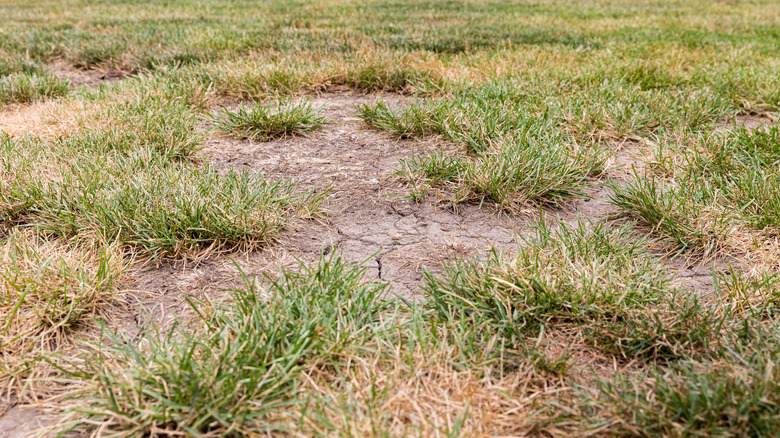Winter is hard on lawns, as soil often gets compacted, or pressed down, during this time of year. This is partly due to the weight of heavy snowfalls and partly because wet, snow-laden soil is simply more prone to compaction. It doesn’t help that plants and animals tend to go dormant during cold months as well, so there’s less activity happening underground to churn up the soil. As a result, when spring rolls around, you may find that your soil is hard, dry, and lifeless. The solution? Aerating your lawn. This is one task you should complete after the last frost in your area every year to bring your yard back to life.
Before you think about fertilizing or reseeding bare patches of lawn, set your grass up for success by aerating. Depending on the tool you use, the aeration process will punch holes in the ground or remove small tubes of soil. This lawn care step will not only make your yard easier to work with so you can plant new grass or flowers with ease, but it will also keep your soil — and thus your plants — healthier.
Why aeration is important

Aeration creates spaces in compacted soil that allow air, water, and nutrients to trickle through to the roots of your lawn. It also improves soil drainage, which reduces roots’ risk of getting waterlogged during rainy periods. And it loosens soil particles, making it easier for new plant roots to penetrate through the dirt.
Aerated soil is also friendlier to beneficial insects like earthworms. Worms help keep soil aerated by burrowing through it, and their excrement delivers vital nutrients like nitrogen and phosphorus. But these squishy little helpers need air too, and they’ll have trouble breathing in hard, compacted soil — they also won’t be able to move through it as easily. Because of this, after you’ve attracted worms to your garden, you’ll need to aerate your lawn in the spring so they can burrow through the soil and receive oxygen.
However, before you aerate, check your lawn for thatch. Thatch is a layer of dead grass that builds up over time, forming a mat on top of the lawn. When this layer becomes too thick, it can prevent air, water, and fertilizer from reaching the soil. If your thatch is more than half an inch thick, take some time to loosen it with a dethatching rake. Once you’ve completed that crucial step, you’re ready to aerate.
The best ways to aerate your lawn
There are several tools that can help with aerating your lawn. Spike aerators are manual tools that are pressed into or rolled through the soil to create holes. Punch-core aerators work similarly, but instead of simply poking holes in the ground, they remove larger tubes of soil that leave more room for air. Most lawn-care experts recommend core over spike aeration because it creates more space in the soil and helps break down thatch.
If your lawn is on the small side, manual core aerators may be a cost-effective option for tackling soil compaction. You can buy a manual core aerator, such as the Fiskars Steel Extended Reach Coring Aerator from Home Depot, for under $50. However, if you have a large or severely-compacted lawn, you’ll probably need a more expensive gas-powered or tow-behind core aerator. Purchasing one of these will set you back hundreds or thousands of dollars, but you can rent them for much less. For example, renting a Classen 18-inch Compact Aerator from Home Depot starts at $72 for four hours.
There are also some liquid aeration chemicals on the market nowadays. These may seem like an attractive option because they don’t require any special equipment — all you have to do is spray them on your lawn. However, there’s little scientific research that shows that liquid aeration is effective. You’re better off using the tried-and-true method of core aeration to bring your lawn back to life this spring.